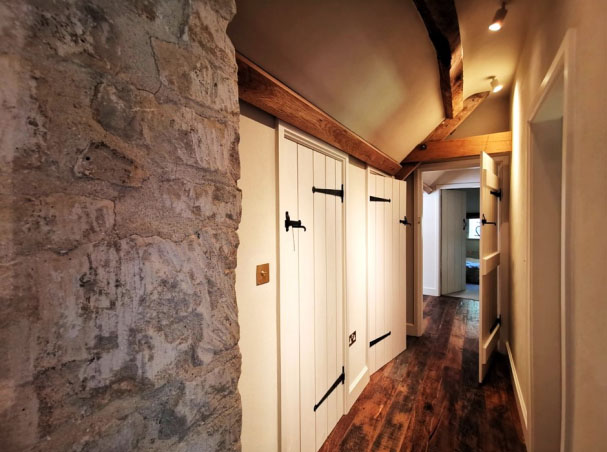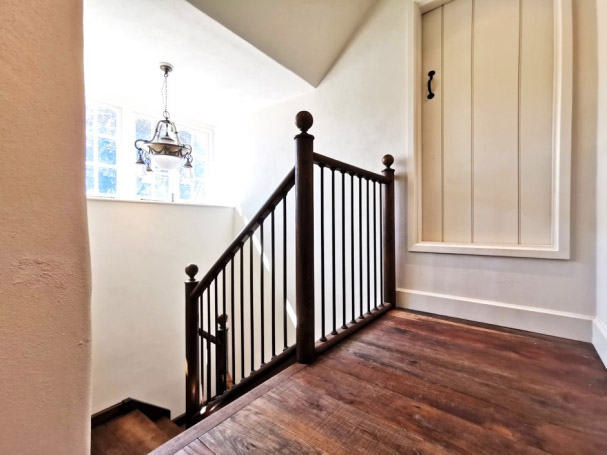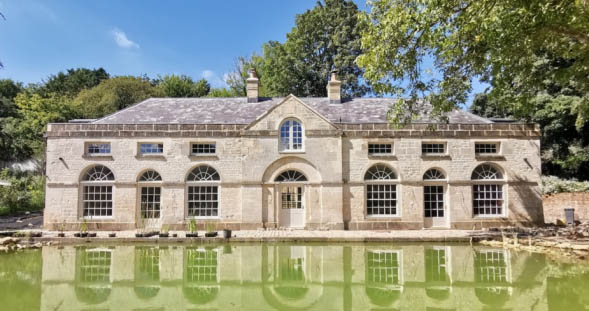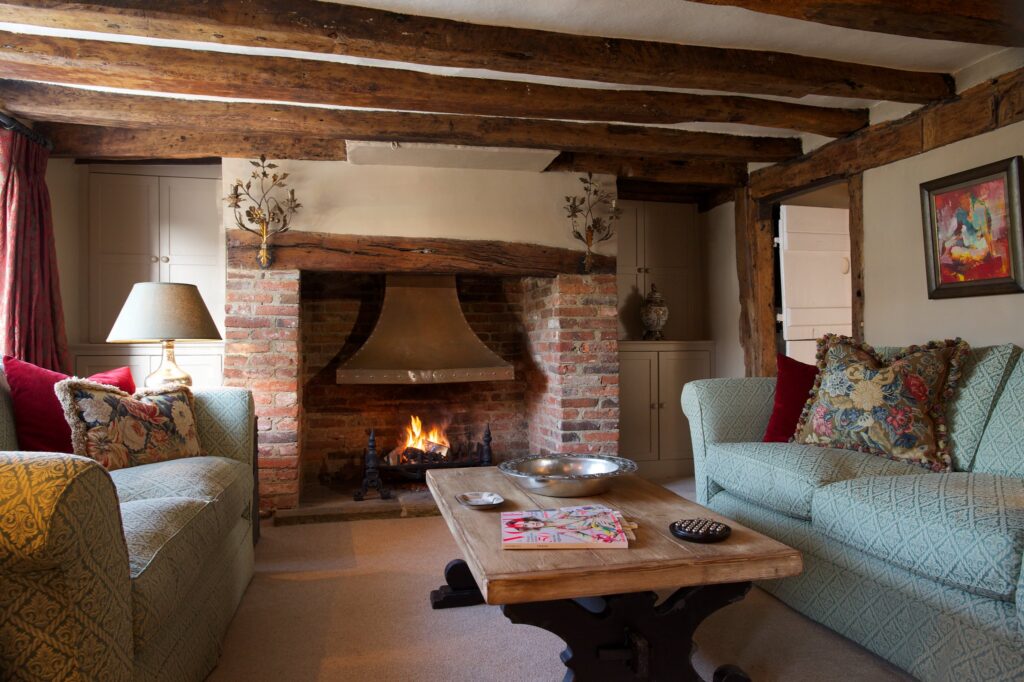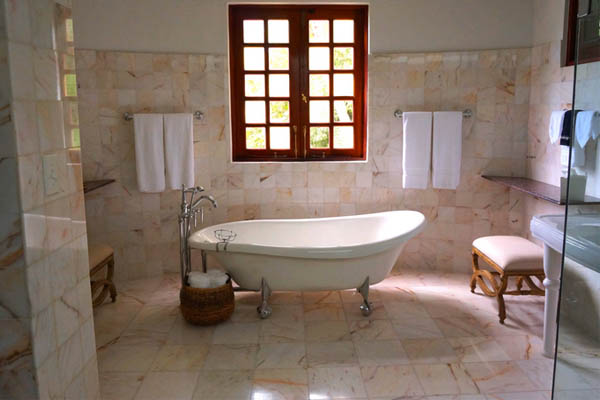With this article, our aim is to present conservation-minded solutions to the most common challenges encountered when restoring old or listed buildings, including:
– Lateral moisture penetration through walls in contact with the earth
The Cob House Project
Best Renovation/Restoration Project 2024 Award Winner
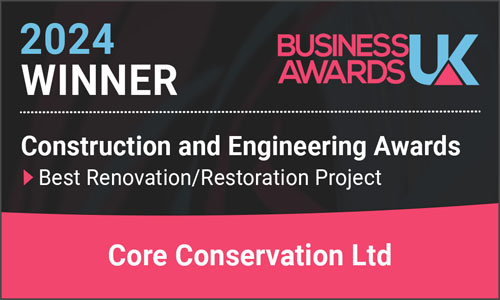
The Cob House is a 300-year-old Grade 2 listed converted block of stables, originally serving as the stable block to Steanbridge House in Slad, nestled in the picturesque Cotswolds.
This project was approached as a conservation endeavour, with the client’s primary focus being the preservation of the building’s character while bringing it up to contemporary standards fit for the 21st century.

However, shortly after commencement, it became apparent to the architect that certain aspects of the project posed greater challenges than initially anticipated. The lime plaster applied to the walls began exhibiting discolouration and crumbling in various areas, mere months after its application.
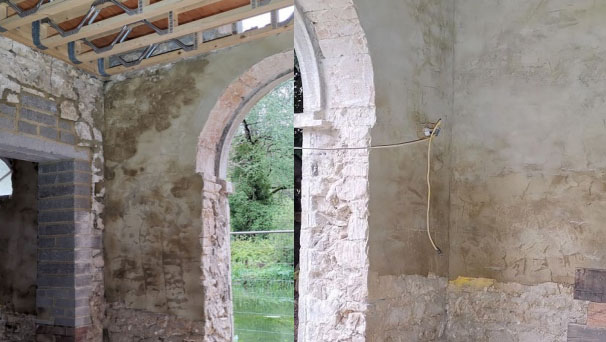
This is when we got involved.
Analysis of The Problem: dampness and other issues
Through detailed field laboratory analysis, we discovered that there were five main problems to overcome:
– High water table (as visible from the water level of the pond)
– Sideways ground moisture penetration through earth touching walls
– High level of salt contamination of the building fabric (the structure was a block of stables, where large quantities of decomposing organic matter created significant nitrate contamination)
– No damp proof course (nitrate saturated ground moisture could climb inside the freestanding masonry unchecked, bringing dissolved nitrates up into the masonry)
– Solid stone masonry is exposed to the elements (after a few weeks of heavy rain the stone work could get wet to the degree where some moisture appeared in the inside, causing patches and plaster damage)
In other words, we were dealing with a structure with excessive dampness problems coming from sideways rain water penetration, sideways ground moisture penetration through earth touching walls, excessive rising damp due to high water table, and large quantities of erosive salts.
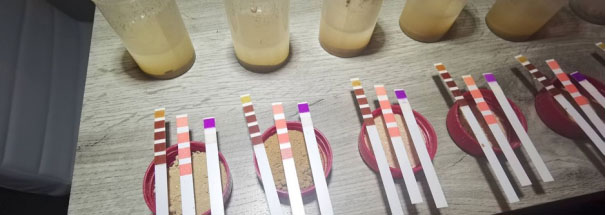
On-site salt measurements
Accurate specification of traditional solutions and building materials
Mindful of the project’s conservation ethos, the building conservation specialists of team Core Conservation devised a renovation concept aimed at addressing the dampness issues and achieving wall insulation with a U-value of 0.5, exclusively employing breathable lime-based products.
1. 10-20mm MGN Rinzaffo salt- and moisture resistant protective lime base coat (an original Roman recipe from Marcus Vitruvius Pollio ancient Roman architect)
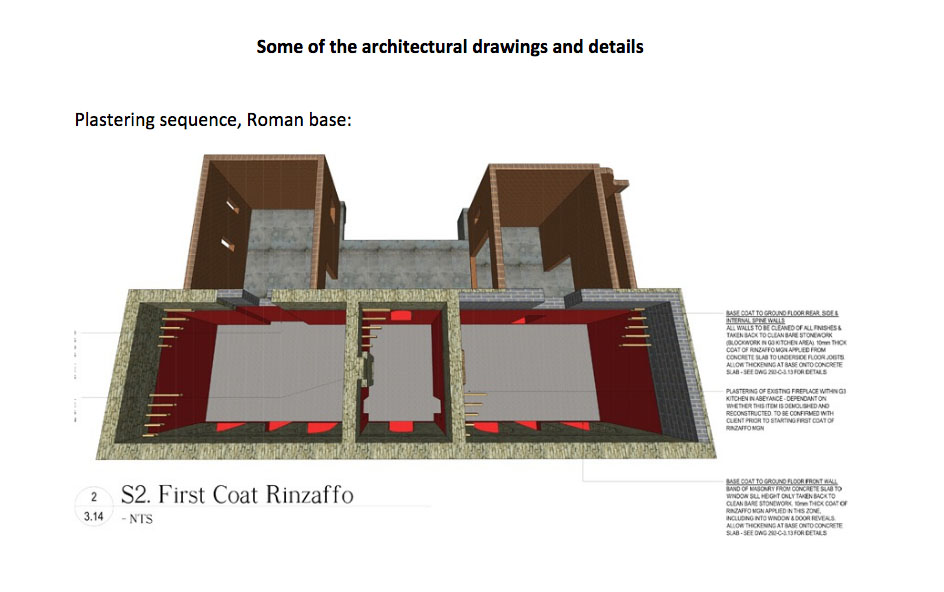
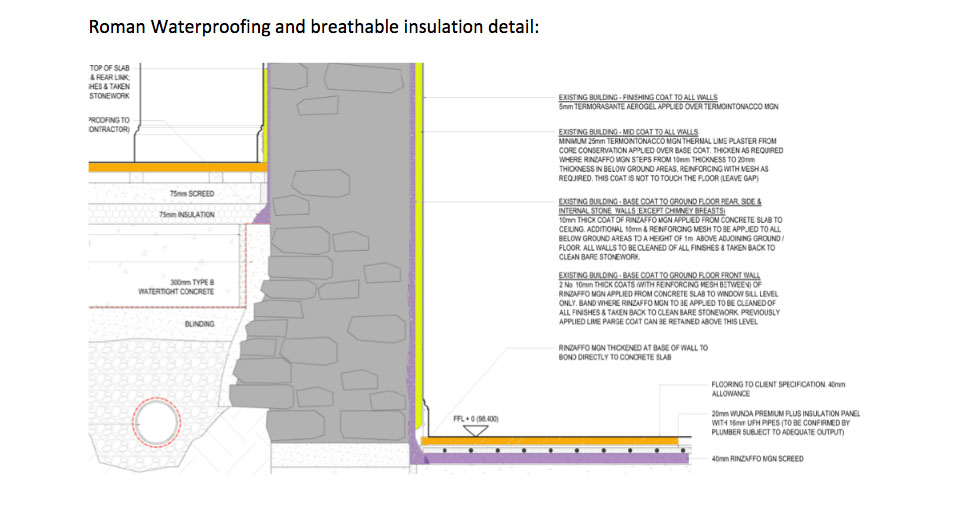
Need help?
Supply
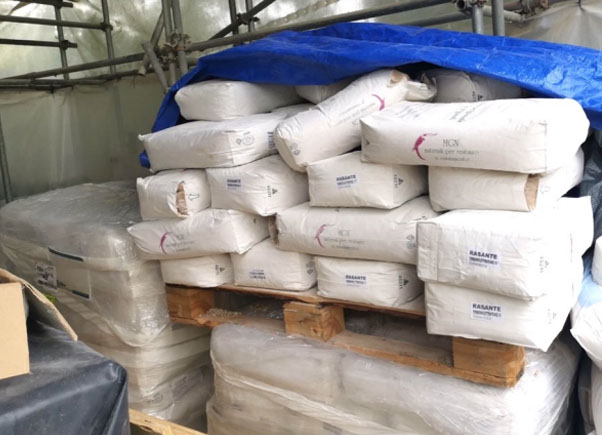
Application
MGN Rinzaffo salt- and moisture resistant Roman base – machine application:

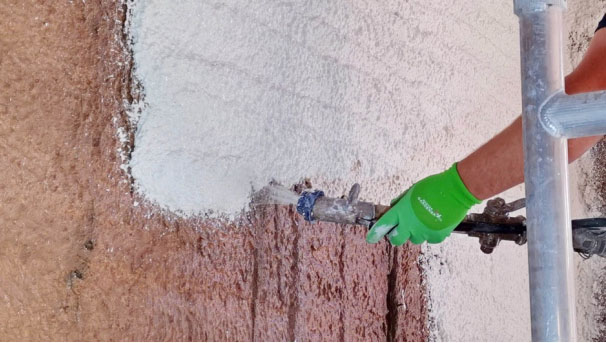
Roman Lime Floor Screed
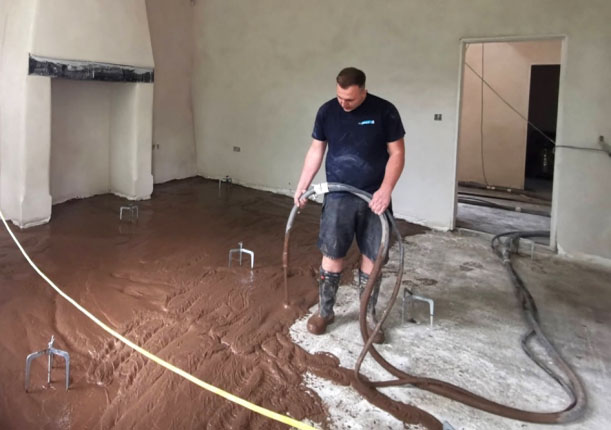
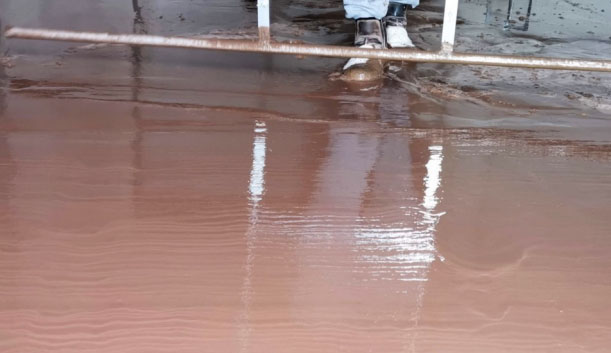
You can find more information about breathable, heat storage lime floors by clicking here
The Results in Pictures
Charming traditional aesthetics with 21st-century performance capabilities

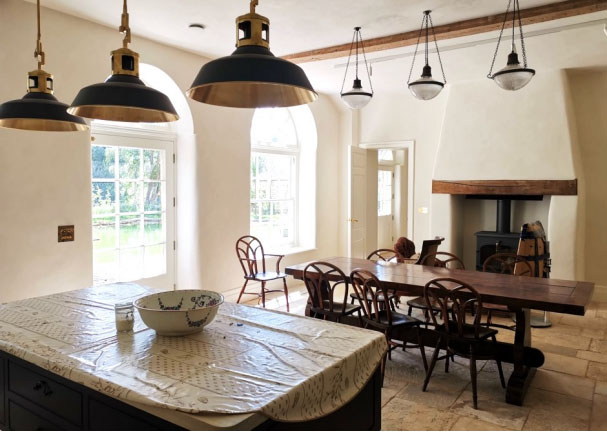
By employing a blend of Roman Waterproofing techniques and AeroGel insulating lime plasters, alongside Roman lime floor screed, the property was meticulously restored into a cosy and dry period family home.
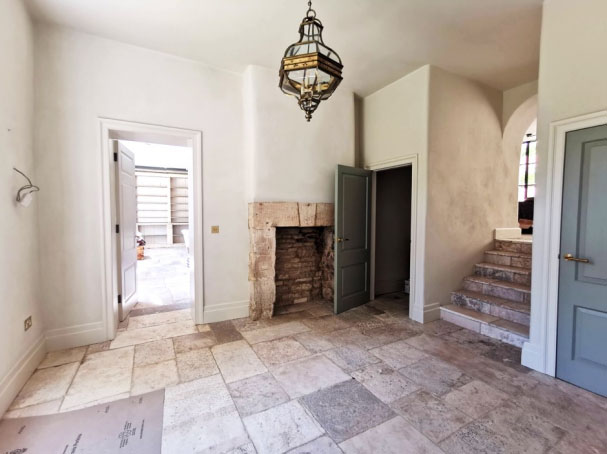
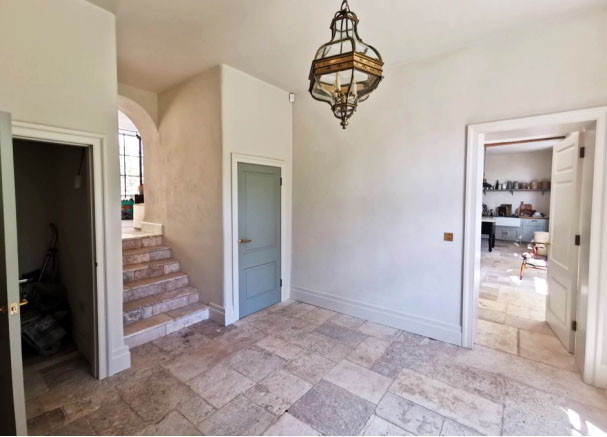
In our understanding of traditional architecture, Roman solutions and materials excel under challenging conditions. Regrettably, the techniques and materials used in Roman architecture are often considered ‘lost technology’; and are no longer in use.
However, this project serves as a compelling demonstration that the wisdom of ancient Roman architects remains accessible and applicable to our historic buildings, yielding impressive outcomes, just as they did over two millennia ago.
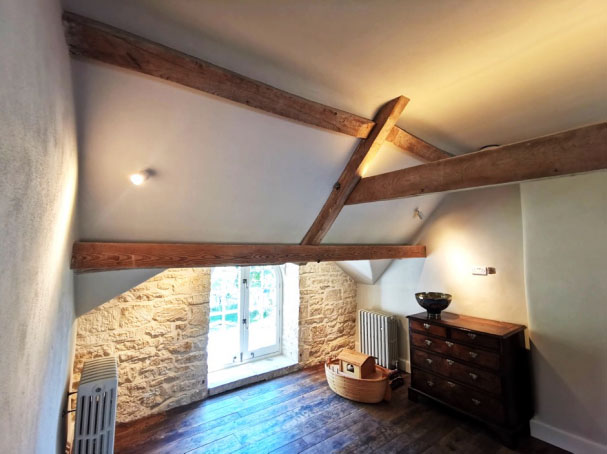

This project exemplifies many of the typical challenges encountered with older buildings, as well as the expectations involved in restoring a listed property to a high-end family residence.
